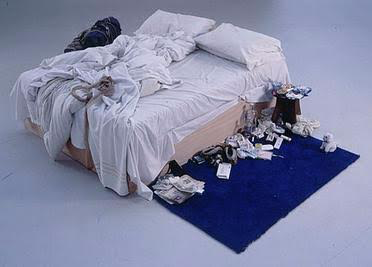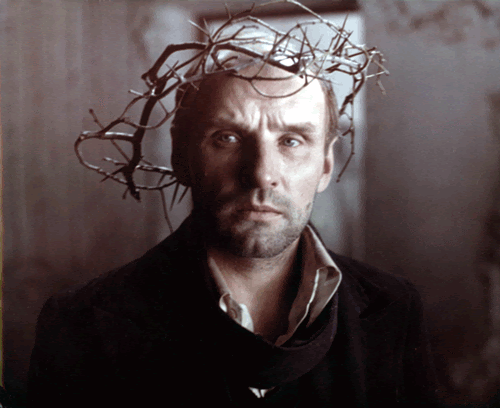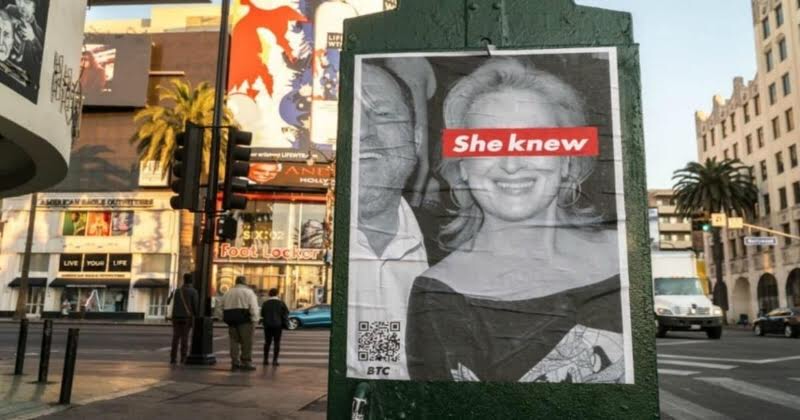Captain Logos
Any conservative movement may be doomed in Australia. But I’ll at least tell you why, and how it can be remedied. The reason for this is the arts. You may ask “The arts? Are you insane? People care about economics, specific issues, public services and immigration, etc. Not the arts.” Well, that might be the problem: it’s a sleeper issue despite being the key to our hearts and minds.
People form their opinion from various things in the culture, particularly journalism and social media, but there is one large space that is almost completely uncontested in Australia, a series of popular artistic mediums that often inform our views about the world. Andrew Breitbart said politics is downstream from culture. Goebbels said that if you say something enough times it becomes true. Well, the Australian art scene has become increasingly lock-step ideologically and the positions it has promoted for decades are now becoming reality. We may have joked in the past about cringey art with absurd ideological positions, queer theory-inspired conceptual art for instance, but over time these ideas incrementally moved to the mainstream and became public policy. We wouldn’t have the Safe Schools program if inroads were not made artistically first. Everything new, good or bad, by its very definition was once considered avant garde and it often manifests first artistically.
You would think that something like the art world, built on a modern history of free expression, would be the first in line to defend free speech. Unfortunately, ideologues have used free speech for their own progress, and now that they have consolidated cultural power they no longer need free speech, because they now control speech. Though they were once the victims of censorship, things have turned full-circle and neo-Marxists are the neo-puritans and arbiters of what can exist in mainstream culture. Hence why there is such truth to Paul Joseph Watson’s simple statement that “conservatism is the new punk”.
The arts in Australia remain almost entirely a leftist concern for institutional reasons. Traditionally, artists learn their craft at universities. Not only are these courses highly ideological, but their students are highly impressionable. This is all common knowledge and a deadly combination. What may not be realised is that when the arts are almost entirely propped up by Government institutions, it creates an unnatural environment where independent ventures compete against publicly funded entities in a market so distorted that we have almost no thriving arts industries at all. Government funded arts don’t have to worry nearly as much about commercial failure: it’s just public money and they have no skin in the game. They maintain funding via “key performance indicators” (KPI), a series of statistics based on highly political outcomes related to identity politics. If objectives are not met, that’s when the bureaucracy’s accountability kicks in and rather robotically punishes those who work within it. In room 101 You can be accused of sexism or racism quite flippantly if quotas are not met. Beyond this, Government institutions such as galleries, public broadcasters, festivals and some Government-supported cinemas ultimately act as gate-keepers and can prevent anything they don’t like politically from being seen publicly. Hence a very consistent narrative that runs through almost all publicly funded artwork and exhibition. Cue welcome-to-country ceremony to make the rich white people feel good about themselves. When you couple this with the increasing censorship and social agendas of Silicone Valley multi-nationals, it’s no wonder alternative avenues are few and far between. A conservative or even centrist idea in the arts is snuffed out before it can even happen.
Quality and aesthetics have given way to politics as the focal point. Whether on the ABC or in university classes, an unquestioned version of history is repeated, not as something to explore but merely rote science to repeat and propagate. Marcel Duchamp’s Urinal (1917) has created generations of imitators, conceptual art cop-outs, best personified by the manufactured movement of “young British artists” in the 80s and 90s. Kate Bush’s highly technical and sublime approach to music and dance, best expressed by her era-defining video clips, would make way for a Tracey Emin’s dirty bed surrounded by vodka bottles and overflowing ashtrays as the new zenith for the aspiration of female artists by the late 90s: an all-out assault and degradation of feminine ideals. So if you can see the values that are now rewarded by arts establishments, it’s no wonder why we are at civilisational crisis: this chaos is institutionalised.
Kate Bush successfully married Classical, Anglo-Celtic, pop music, ballet and interpretive dance into an utterly unique modern creation in the 80s, all the while retaining great femininity and even sexual modesty.

This downward spiral has produced a poor generation of arts practitioners, best exemplified by the “street art” boom in Australia. This “street art” is created partly to fix another problem, horrible modern architecture, with a kind of spray-painted bandaid. “Street art” is busy-work for arts graduates who have nothing better to do and it shows in the government-approved work. It has none of the guts of real graffiti.
At the recent marriage plebiscite, every arts organisation changed their logo to a rainbow. One such organisation even contacted me to promote a gay activist march, which I felt was inappropriate and far beyond their brief. This vote could have been much closer if it were truly contested on every front. Imagine for a moment if you were part of the 40% of Australians that didn’t agree with a Yes vote and you wanted to create some large-scale art or film to express that. Good luck, you are on your own buddy! And in more ways than one. Not only would you not be funded, but you would become a pariah, blacklisted from further funding and employment. Others would have their own opportunities and employment prospects threatened simply by associating with you. The punishments within the bureaucracy would kick in. This is not a sector where people often transcend cowardice.
The word “bravery” is thrown around quite a bit in the arts, but it’s usually misplaced. To go old-school lefty for a moment, which is increasingly looking like One Nation, the Aussie art world’s stagnation is partly because upper-middle-class consolidation has reached critical mass. It’s one of the best examples of how Marxism is no longer interested in class, because this is neither art for nor made by the proletariat. As I get older, I no longer see the middle class as risk takers working hard to build a small business as an expression of themselves and their culture, but instead they are duped into a dream of finding a safe and cushy government or corporate job. In the arts, the two positions people want are either arts teacher or arts administrator in a government organisation. Their formal study is really for the accreditation to gain such employment rather than any real character building or enlightenment. One needs to be pretty conformist and not rock the boat to get these positions. Hardly inspiring, and as my father would quote: “those that cannot do, teach”. This wasn’t always the case; one of the most successful filmmakers in Australia once said that AFTRS (Australian Film TV and Radio School) was vibrant and exciting before it became fully accredited. But the accreditation racket has become more important as artistic idealism gives way to pragmatic careerism. A loss of idealism is a loss of faith in something bigger than us all.
The arts aren’t everything, but they’re a big enough slice of the cultural pie that, if uncontested, will be enough to lose every culture war there is. And that’s even when a conservative government is in power, because anything and anybody can be shifted in any direction. If we have culturally lived in the echoes of Woodstock, we cannot be surprised that family breakdown is normalised. Overton windows move, democracies are playthings, and if you think the arts don’t matter in the culture war, maybe that’s why conservatives have lost on every front, regardless of who is in government.

But let’s look at ourselves. What are churches doing for the arts? Once upon a time they were the arts, perhaps in the reverse version of our current paradigm, but it’s undeniable that they were integral and entangled with the absolute vanguard of what was artistically possible. While Christianity was thematically central, some of the greatest art and aesthetic innovation was produced. Notre Dame Cathedral is one such example of a mammoth series of artistic achievements. Its scale dwarfs the biggest of Hollywood blockbusters in terms of resources, and represents centuries of craftsmanship. Stained-glass windows were an amazing technical and aesthetic innovation. Cathedrals like this combined all the great artistic mediums into one and defined our culture in the process. This should make it easy to see why the arts really are such a battleground. But now the churches are on the back foot, afraid of saying something wrong and frankly disintegrating into irrelevance. Again, lacking boldness is a key theme here. The older churches are withering into owners of empty property, while the more thriving Pentecostal Churches, apart from their music, tend to by philistines. These modern churches have architecture indistinct from 24-hour gyms or supermarket exteriors. There’s no lack of money, just poor taste. Australia also lacks a culture of philanthropy to privately fund the production of art. So there simply isn’t much of might that counters the Australia Council.

The good news is that this could be seriously contested if some alternatives to the government-run institutions were available, so people could bypass this system entirely and start creating political and philosophical diversity in this hugely influential cultural space. Yes, that means churches and private citizens waking up. And it’s not all about money, it’s about attitude and vision. To use a truly interesting example of street art, or more accurately graffiti, Sabo pasted pictures of Harvey Weinstein and Meryl Streep standing together with the caption “She knew” to expose hypocrisy in Hollywood culture. It was a hugely successful campaign during awards season that made international news and was all just paper stuck on walls. Like the “it’s OK to be white” paste-up phenomenon, such tactics are a way of bypassing censorship. Conservatives may contest ideas through journalism, stuffy journals and talkback radio, but until other popular mediums and fronts in the culture war are truly contested, progressivism and neo-Marxism gets a free ride to victory via its many Trojan horses.
Soph has been breaking the internet since the age of twelve with her provocative and experimental youtube videos. She represents Generations Z’s swing away from leftism.
There are examples, like YouTube and meme culture, where alternative voices have dominated the space and in their guerilla way, held the fort and made inroads despite censorship. YouTube is probably the most exciting place artistically right now within moving-image, with entirely new film-forms and styles being born from experimentation on the platform. 14-year-old social commentators like “Soph” are making their own innovative, witty and experimental content, and being influential in the process. But I’m concerned that although YouTube is one way to express an idea, it’s also rather contained on these platforms and mostly in a dialogue with itself, which is perhaps why it’s allowed to exist as most who view this content are kept in a bubble. In strategic terms for the right, it’s much like having a military with a ground army but missing an airforce. Unfortunately that equates more to the failed Bay of Pigs invasion than a victory. Things may have to get much bolder. Like an artistic Tet Offensive. Without anywhere near the same kind of available funding, conservatives will have to be cleverer and even more inventive to be heard in a space where the game is rigged. The upside is that it’s more exciting. When the game is rigged, you have to change the game or break the rules and that’s something conservatives are very good at. It’s basically how Trump won an impossible election, because he played by his own rules, many of which were simply that of the natural order, which resonated with people far more than political correctness or celebrity endorsements.
So this is a call to both individual artists and conservative institutions. Artists must strive for integrity rather than acceptance. Critics need to honestly tell the truth rather than fear institutional rejection. Institutions like churches must put their money where their mouth is. I think the example of Jesus Christ has been important for our civilisation and a perfect role model for artists. He didn’t take the easy road and when he objected to something on moral grounds, he very much let it be known. But for larger collections of people in institutions, the answer is the same in that Christ-inspired leaders have been replaced by managers and much of our founding morality has been compromised for short-term survival but long-term obliteration. Senator George Brandis did once attempt to break up the Australia Council and its iron grip on our country’s artistic output, in an attempt to force more political diversity and meritocracy, but unfortunately he didn’t succeed. Public servants and grant-pigs marched on the streets and effectively protested the policy out of existence. If conservatives took the arts more seriously, perhaps Brandis would have succeeded and political correctness would have been curtailed. So I would suggest to politicians that the arts, as absurd as they can be, are no laughing matter, because these films, TV, theatre productions, images and music shape a generation as much as their 12 years of schooling will. Former KGB operative Yuri Besmenov said it takes 15 years to demoralise a nation because that’s how long it takes to educate a generation. Look back at your own childhood and you will just as easily remember music, movies and art as you will your time in class as shaping your identity.



